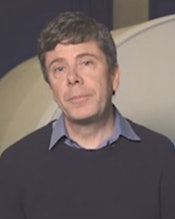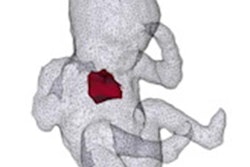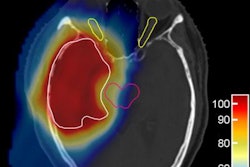
Medical physicists. What do they do, exactly? It's not a well-known field, and, as a former medical physicist myself, I'm no stranger to the puzzled looks and confusion -- I was once mistaken for a physiotherapist. Perhaps one reason for the mix-up is that medical physics is a dizzyingly diverse field. When it comes to a career, though, that's good news, as there is plenty of choice.
"It's a microcosm of physics all in one field," said Simon Cherry, PhD, whose lab develops optical and PET imaging technology at the University of California Davis. PET, for example, is a technique that exploits both nuclear and particle physics: Positron-emitting radioisotopes are mapped in the body using gamma rays emitted on annihilation of the positrons. Physicists in MRI, meanwhile, use electromagnetic theory, while those in ultrasound imaging apply acoustics.
Healthcare, academia, and industry are the big three sectors where medical physicists work, and research jobs can be found in all three. In hospitals, clinical medical physicists also provide essential services, such as safe, accurate, cancer treatment, and introduce new technology so that patients receive the most up-to-date care possible. For example, medical physicists are playing a major role in the arrival of proton therapy in the U.K. this year.
In industry, physicists support increasingly sophisticated medical technology, and they deliver services such as radiation protection. Companies range from global firms -- like the vendors of accelerators used for radiotherapy -- to smaller, more niche enterprises that make device components. Many of these businesses recruit graduates.
 Simon Cherry, PhD.
Simon Cherry, PhD.Contact with patients varies between jobs.
"There are [areas] where you're mainly concerned with the images or equipment and you very rarely see a patient at all," said Heather Williams, PhD, principal physicist in nuclear medicine at the Christie Hospital in Manchester, U.K. "But that motivation to put the patient at the center of everything that you do is common across all medical physicists." And indeed, when you ask medical physicists what they love about their jobs, making a difference is a recurring theme.
Now retired, Mark Tooley, PhD, president of the U.K. Institute of Physics and Engineering in Medicine (IPEM), personifies the hard-to-pin-down nature of medical physics. In his career, physics and engineering blurred into one another. He held several roles as a physicist, though he was an engineer by training. Fascinated by electronics and amateur radio, Tooley's first role following his clinical training was as a physicist at Bart's Hospital in London in the mid-1980s, applying signal processing to extract useful information from signals from the body.
"Communications and signals were always an interest of mine," he said. Back then, he used an IBM XT personal computer. "It cost 6,000 pounds [6,834 euros] and had a 10 MB hard disk, and I thought this was absolutely amazing."
In his first big project, which was also his doctorate, he worked with a cardiologist. Together, they measured electrical signals inside the heart to distinguish abnormally high heart rates caused by disease, from those due to other causes. Their research ultimately led to a patent. Such interdisciplinary collaborations are common and essential in clinical practice and research. "That's when ideas happen," Tooley said.
Echoing the point, Cherry recommends prospective doctoral students should find labs that work closely with clinicians, for a good start in research. "The best that you can do is immerse yourself in an environment where you're close to a hospital and you're talking to physicians." Working on the front line, they have an intimate understanding of clinical problems and whether new solutions can work in everyday practice.
As datasets grow larger and analysis becomes more sophisticated, solid computing and programming skills are vital too. "Now things such as machine learning have become so important, not to mention lots of other advanced statistical methods that we use, students do need to be prepared to do some computational work," Cherry said.
Translating research into the hospital can be a long-term endeavor. Some 13 years in the making, and a defining project in his career, Cherry's lab is developing the first total-body PET scanner. With the prospect of scanning its first patients within the next year, the system promises 40 times the sensitivity of those currently in hospitals.
Clinical physics can offer more immediate rewards -- physicists can see the patients they are helping day-to-day. Especially in smaller clinics, a physicist's day can also be really varied. "You may be doing some [treatment] planning in the morning and by the afternoon you're on a [treatment] machine sorting out a problem," said radiotherapy physicist Robert Farley, head of medical physics in the South Tees Hospitals National Health Service (NHS) Foundation Trust in Middlesbrough, U.K. "Then you have to come back and advise a consultant on a specific patient treatment."
Where to start
Clinical training programs are available globally, including in the U.K., the U.S., and India, all with varying entry requirements and structures, though fierce competition for places is common. Alternative routes are also possible for those researchers who may be looking to change careers, as are jobs as a medical physics technologist.
Before going further, Farley recommends talking to people in the field, visiting departments, and getting work experience to get a good feel for the discipline. Keeping an open mind is important, he said. Switching from a research career in chemistry using MR techniques, he assumed MRI would suit him best. But after a tour of a local radiotherapy department, he was captivated.
"I was [also] told by a friend that they couldn't imagine me working with patients," he said. "So don't rule things out because, actually, you might surprise yourself."
© IOP Publishing Limited. Republished with permission from Physics World, a website that helps scientists working in academic and industrial research stay up to date with the latest breakthroughs in physics and interdisciplinary science.



















